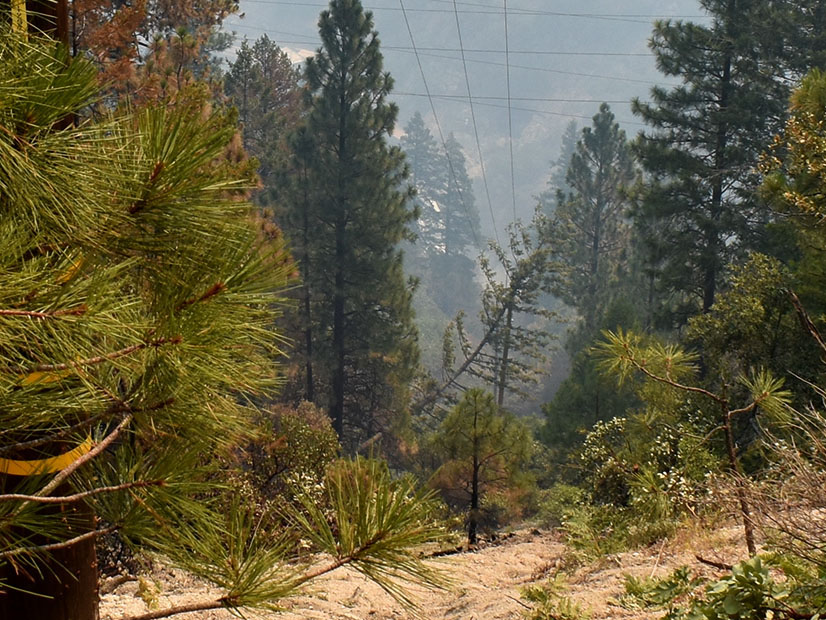
Pacific Gas and Electric (NYSE:PCG) has reduced the total miles of power lines it intends to bury over the next three years, saying it needs to proceed more gradually to show that undergrounding can be performed cost effectively and to appease critics.
PG&E wants to eventually underground 10,000 miles of distribution lines in high fire-threat areas at a cost of $25 billion or more. The controversial plan, which needs regulators’ approval, is part of PG&E’s efforts to prevent its equipment from starting catastrophic wildfires like those in the past five years. (See PG&E Pleads Not Guilty to Manslaughter Charges.)
The utility had sought to bury 3,600 miles of lines by 2026 but revised that figure down to 2,275 miles, a move it discussed in a fourth-quarter earnings call Thursday.
“We reduced our mileage as a result of conversations with our key stakeholders,” CEO Patti Poppe said on the call. “We have to earn the right to do that underground. We have to prove that we can, in fact, do it at the unit cost that we’ve described …
“I remind myself that the Golden Gate Bridge wasn’t built in a year,” Poppe said. “It was built over time, and it’s beloved, and that’s what our undergrounding program is going to be. It’s going to be built over time, and it’s going to be beloved. And we have to earn the right to grow those miles year after year after year. And so, we’re very focused on doing that well.”
Poppe said PG&E had buried 180 miles of lines last year for less than the $3.75 million per mile that it had estimated in its earnings call a year ago. During that call, Poppe said the utility expected to bring down the cost of undergrounding to $2.5 million per mile by 2026 through efficiencies of scale and technical advances. (See PG&E Plans to Spend $25B to Bury Lines.)
The utility asked the California Public Utilities Commission to approve nearly $10 billion for undergrounding in its 2023 general rate case but revised that figure down to about $6 billion with the decreased mileage.
PG&E plans to file a 10-year undergrounding plan with the state later this year under the terms of Senate Bill 884. Signed by Gov. Gavin Newsom in September, the bill provides for expedited review of undergrounding plans submitted by large electrical corporations to the CPUC and the state Office of Energy Infrastructure Safety.
“That will clarify mileage and unit cost targets,” Poppe said. “And I also want to remind everyone that, look, this undergrounding program is very important from a risk reduction and a customer satisfaction [perspective], but it’s not a big bet. The undergrounding program is less than 20% of our total capital plan. It is flexible and dynamic in nature. We’re going to be working with our regulators and those stakeholders to make sure that we do undergrounding at a pace that they support.”
Undergrounding Opposition
The pace supported by some intervenors in PG&E’s rate case is far more limited than even the utility’s revised proposal.
In January filings, the CPUC’s Public Advocates Office, the California Farm Bureau Federation and communications companies such as AT&T questioned the feasibility and cost of PG&E’s downsized plan.
The Utility Reform Network, a consumer watchdog group, said in a Jan. 23 brief to the CPUC that PG&E had lowered its mileage target in a December filing because it knew it was falling behind meeting the 2023 goals that it had outlined a year ago.
“PG&E suggests that its mileage reduction responds to intervenor concerns about the company’s ability to achieve its February 2022 targets but never admits that PG&E itself has come to realize that those targets were unrealistic,” TURN said.
It cited an internal slide presentation it received from PG&E that said, “Work readiness for 2023 [underground] work execution is behind target as of mid-October” because of challenges with permitting, land rights acquisition and the availability of materials.
Despite the delays, the utility is “moving ahead with plans to underground 350 miles in 2023, at a forecast cost of approximately $1 billion,” TURN said. “PG&E appears committed to this path, even though it has not received any authorization from the commission for any rate recovery for its 2023 undergrounding proposal. Needless to say, PG&E’s undergrounding request is hugely controversial and subject to CPUC disapproval, in full or in part.”
TURN recommended to the CPUC that PG&E should focus its system hardening work on “installing 450 miles of covered conductor in 2023 at a cost of $358 million, with a more focused and feasible undergrounding deployment in 2023 that targets the 50 highest-risk miles at a cost of $167 million.”
“In TURN’s view, the prudent course for PG&E in 2023 would be to focus on covered conductor — a proven strategy that the commission has already endorsed — with a much more targeted use of undergrounding,” it said.
“The execution challenges that PG&E is already experiencing and the company’s lack of transparency about those problems should raise concerns,” TURN said. “The nature of the challenges underscores the huge question marks about the timing and executability of PG&E’s plan.”
